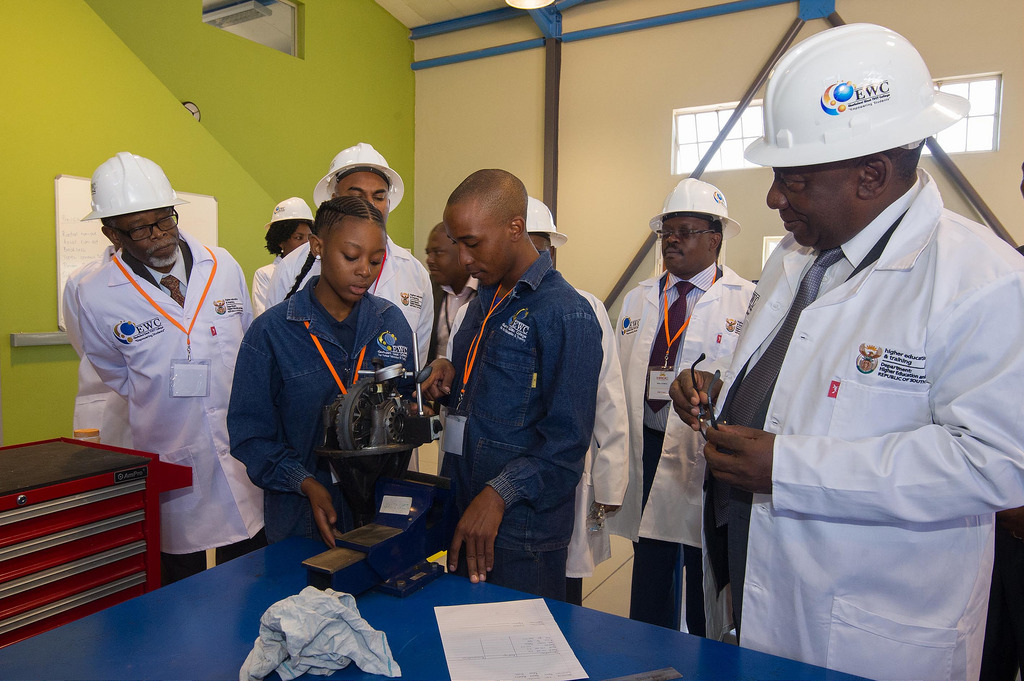When we talk about university transformation, race, gender and sexuality usually take centre stage of the discourse. The accessibility of the university environment for students with disabilities is often only thrown in as an afterthought, despite efforts towards intersectionality in most student movements. The Daily Vox looks at the structures that are currently in place and those proposed by the government to make university more accessible for students with disabilities.
Disability is an umbrella term for a range of physical, sensory and mental dispositions. South Africa’s Department of Higher Education and Training (DHET) uses the Washington Group’s designations of disability. This ranges from sight and hearing disabilities, to mental illnesses and physical impairments. For individuals with disability, society can be quite inaccessible and discriminatory – ableist – towards them and this is no different for university spaces.
According to the Higher Education Management Information System data from 23 public universities, there are over 7,118 students with disabilities nationally – although this number is likely underestimated as not all students disclose their disabilities.
Some universities have Disability Rights Units (DRUs) which cater to the needs of students with disabilities. But as Marcia Lyner-Cleophas, the Head of Stellenbosch University’s Disability Unit, told the Daily Vox, this is not necessarily a solution to the problem.
“We need to move towards campuses that are universally accessible, be that in the physical space, access to information or access to the teaching context. This means that as we become more universally accessible to the largest range of people in terms of ability, the more accessible we will be as a campus and the less reliant we will be on disability units,” said Lyner-Cleophas.
As it stands, university DRUs play a pivotal role on campuses to students with disability. DRUs generally perform roles like arranging venues for students who require extra time for tests and exams, providing computers with specialised software, being the go-between for students and lecturers and acting as advocates for disability rights and awareness. Some go beyond this, advocating against student expulsion due to inability to meet deadlines, providing alternative transport options and making room to aid students who face difficulty studying.
But not all university DRUs offer the same services, as access to funding and resources are obviously different depending on the university. Reinette Popplestone, manager of the University of Cape Town’s Disability Service, told The Daily Vox about this inter-university inequality.
“We are at the moment funding a student with quadriplegia. The disability unit is paying from donor funding for his care-assistant and we thus also pay for the care-assistant’s accommodation in the residence. We did this because we knew that this was the only way he could complete his degree,” said Popplestone.
Currently, the higher education department does not provide any exclusive funding to universities to cater to the needs of disabled students. So the ability of universities to be able to meet the needs of students with disability ultimately relies on the uncertainty of raising funds independently.
“It is a question of how progressive the leadership is in the units, how much they understand about disability and how ready the executive is to make the funds available. And the big thing, unfortunately, is that unless one is raising funds yourself – outside the university – you could never provide the services that places like UCT do,” said Popplestone.
However, an important progressive shift regarding disability in higher education is currently taking place.
The DHET released their Ministerial Committee’s report on the “Draft Policy Framework for Disability in the Post-School Education and Training System” on the 18th of November 2016.
It highlights a number of concerns surrounding the accessibility to higher education and training for disabled students – including the lack of a standard model defining disability, the inequality of DRUs, the need for efficient reporting and monitoring systems and the importance of funding set aside exclusively for universities to facilitate the needs of students with disabilities.
Formally, the policy framework recommends the following as the basic strategic plan going forward:
1. Develop a working definition to define disability
2. Develop a classification model for disability
3. Develop a cooperation and coordination mechanism for students with disabilities in Post-School Education and Training (PSET) institutions
4. Develop norms, standards and guidelines for implementation
5. Develop a standardised reporting system (including indicators) for people with disabilities in PSET institutions
6. Develop funding mechanisms for implementation
7. Implement services for students with disabilities
8. Develop awareness and advocacy programmes
9. Include career development for students with disabilities in DHET initiatives
10. Monitor progress and evaluate implementation
The DHET’s draft policy framework remains open for public comment until the 28th of December 2016, but seems to be a long-overdue step in the right direction for disability justice.
But as Lyner-Cleophas points out, the task is not complete, even with the government’s recommendations.
“Accompanying this is doing the necessary advocacy on campus so that this translates into campus discourse and practice. So biding our time and engaging more and more is a challenge, but this the only way we can change the dominant narrative about accessibility.”









